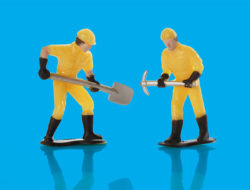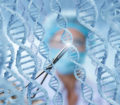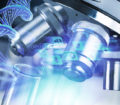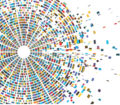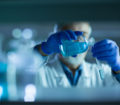Defined
You are a walking ecosystem. Our bodies are home to hundreds of trillions of microscopic bacteria, viruses, and fungi collectively called microbes. Unlike our genes, we’re not born with them. We gather them throughout our lives, the very first coming via the birth canal. Microbes also live in soil, on plants, and in the ocean and atmosphere. Whether it’s in your gut, your mouth, your poop (see below), or on your skin, bacteria are everywhere. Yes, some are bad. But most are rad. Expect to hear a lot more about them soon.
High Tech
At UC San Diego’s Center for Microbiome Innovation, researchers are working on nanotechnology sensors that reach inside single cells, and drones that map the global microbiome and link to climate models.
Systems Affected:
- Agriculture
- Water treatment
- Animal health
- Energy production
- Skin care
Holy Crap!
Looking for the Good in E. coli
Salk Institute researcher Janelle Ayres found a strain of fecal E. coli bacteria that, when given to animals infected with salmonella, cured them.
Poop Pills
Massachusetts General Hospital is studying how microbes affect weight, by giving obese patients pills containing a small dose of fecal matter from a thin person.
Participate
You can have your gut microbiome sequenced for $99 at americangut.org. Learn more about it on UCSD’s podcast N Equals One, on iTunes.
Collaborate
The international Probiotics Congress hosts three conferences a year—in London, Kuala Lumpur, and La Jolla.
Infectious Beats
University of Utah researchers made an entire EP dedicated to the microbiome. Download tracks like “Your Microbial Friends Part 1” and “Agent Antibiotic” at learn.genetics.utah.edu.
“Imagine a smart toothbrush that’ll tell you if you’ll get cavities, or a patch on your skin that’ll say if you’ll get dermatitis […] Instead of telling you where your microbiome is right now, we could predict where it’ll be in the future and how you can personally modify that.”—Rob Knight, The Atlantic, October 2015
By the Numbers
$121m
federal research dollars have been allocated for the new national initiative to study personal and environmental microbiomes.
$12m
UC San Diego research dollars will go toward examining how our microbiome could treat asthma, diabetes, obesity, and mental illness.
90%
of the cells in your body are bacterial, not human.
1.2m
new genes were discovered by genetics pioneer Craig Venter on a trip to sample ocean microbes
3 lbs
The collective weight of all the bacteria, fungi, and viruses in your body.
$1b
is spent in the U.S. per year on antibacterial cleaners
2m
people worldwide are infected with antibiotic-resistant bacteria
23k
people die each year as a direct result of these infections
$90k
is the average salary of a microbiome scientist in San Diego, according to indeed.com
Get into it by studying:
- Microbiology
- Computer Science
- Math
Tags: Microbiome, Next Big Thing













